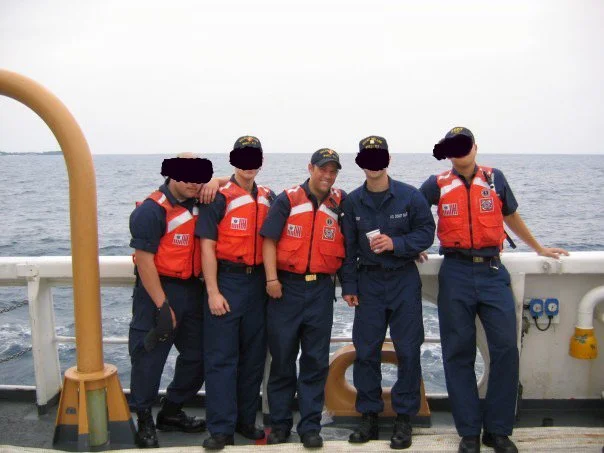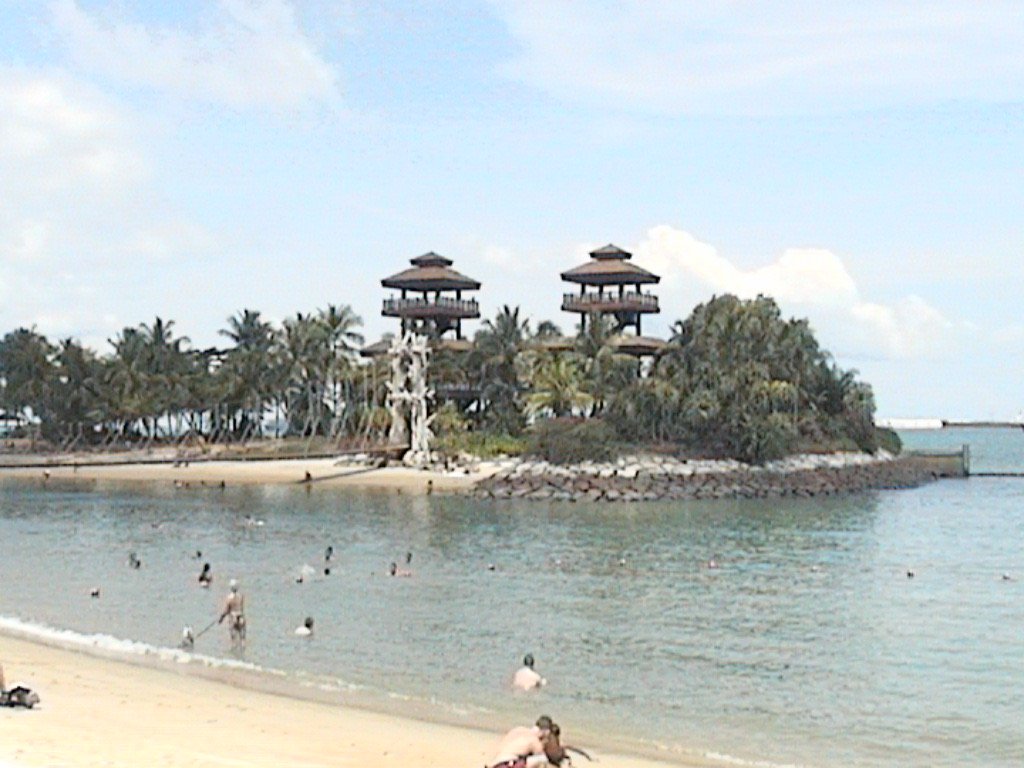Drowning
In 2004, I embarked the Coast Guard Cutter Mellon in Dutch Harbor, Alaska, and sailed across the Bering Sea and Pacific Ocean to Singapore. We were in port for several days, and I explored every part of the country. As this was before wifi, Travelocity, or Yelp, I developed a technique where I would go to the souvenir shops and peruse the postcard rack. I would study the photos on the postcards because, generally, they would showcase the area’s greatest hits. I would see what piqued my interest and head off into the unknown. I remember seeing a postcard for Sentosa Island Beach Resort. There was an image of the suspension bridge spanning Palawan Island, the southernmost point of Continental Asia. I took off into the sweltering heat and went to the beach.
The beach was a tropical paradise shaded by palm trees, where monkeys and peacocks would wander through groups of tourists admiring the crystal clear water. I spent most of my free time in Singapore at Sentosa Island, swimming in the calm, warm waters, trying to escape the oppressive rainforest heat.
While enjoying the beach one afternoon, we traveled over the small suspension bridge to Palawan Island. While walking over the bridge, we noticed a crowd had gathered on the beach near the bridge's entrance.
This area was home to Underwater World Singapore, an aquarium where famed pink dolphins would perform. We assumed the crowd had gathered to see the show. While trying to spot the dolphins, we were startled by a lifeless body on the beach. From the bridge, I saw lifeguards attempting CPR, and I immediately ran onto the shore and through the crowd to see if I could help.
The boy in the sand was maybe ten years old, petite and skinny, with smooth tan skin and dark hair. There was a mix of foam and vomit around his mouth, his eyes were rolled back in his head, and he was covered in sand. One lifeguard was attempting chest compressions, heaving his weight into the boy’s small, fragile ribcage and forcing him deeper into the soft sand. A second lifeguard was vomiting in a panic. The boy’s father was standing behind the lifeguards, hysterical, frantically screaming and praying for help, hoping for a miracle. The crowd stared down silently at the horrific scene, and everyone was hanging on every moment, waiting for the boy to take another breath.
As a beach lifeguard, I was taught that chest compressions were far more effective on a backboard or hard surface than on the sand, so I ran to the nearby beach bar to try and grab something hard to support the boy's body. I came back with a folding table and helped the lifeguards pull his limp body onto the surface. As I motioned to the lifeguards that I was ready to take over the CPR, a police officer grabbed me. He said that I couldn’t help because I could be liable and go to prison if something went wrong.
In the days before this, we had several briefings before leaving our Coast Guard boat about the culture of Singapore and how harsh their laws are.
Singapore allows capital punishment and corporal punishment in the form of caning, and certain offenses result in a mandatory death penalty, with judges having no discretion in sentencing. We heard stories of people being fined for spitting in public, caned for vandalism, and arrested with no trial. Singapore was not a place to get in trouble with the law.
I was scared, and kneeling in the sand, I offered what little assistance I could. I helped count compressions and encouraged the lifeguards to continue fighting for his life, but just watched helplessly. I watched, knowing that with each passing moment, the boy's chances of survival plummeted. I will never forget grabbing the boy's hand, squeezing it, and being surprised at how limp it felt. There was no heartbeat, no life, just cold, damp skin. Several minutes later, an ambulance arrived, and they loaded the boy onto a stretcher and into the back of the vehicle.
I know I watched that young boy die on the beach that day.
Post-flight debrief:
After seeing that boy’s life fade away on the beach, I continually asked why.
Why was I there that day? Why couldn’t I have walked over the bridge earlier and seen him drowning? Why did he drown in perfectly serene water? Why couldn’t the lifeguards save him? Why couldn’t I save him? Why was the plan for me to travel across the world to see a boy die?
I needed to find some meaning in the tragedy, and eventually I did.
My whole life, I wanted to be a pilot in the Coast Guard, and watching that boy drown, I realized why. I realized I needed to spend my life trying to protect people from ever suffering that loss. I came face to face with the dangers of open water, and face to face with death, as I watched a father lose a son. That moment became my “why” and would fuel me through the greatest challenges in my life.

